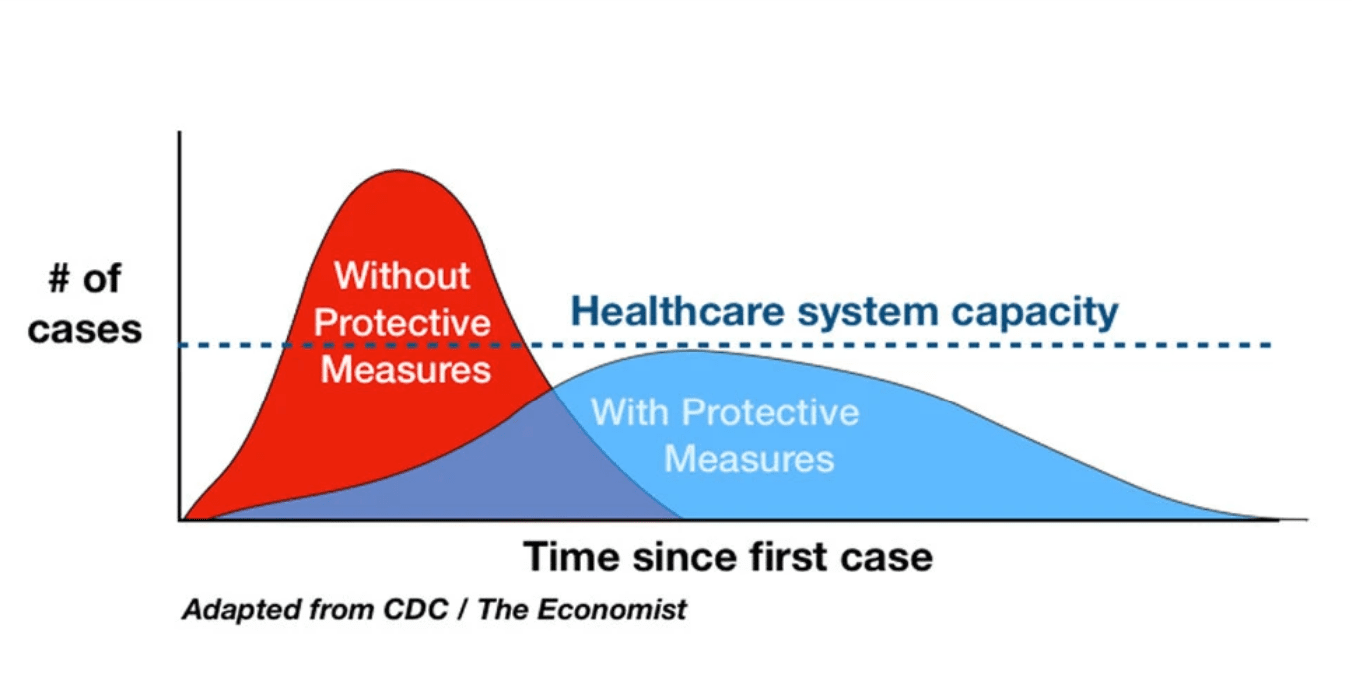How The Flatten the Curve Argument For Lockdowns Always Contained False Assumptions
Executive Summary
- Flatten the curve as a concept was presented as the logic for lockdowns.
- How accurate were the assumptions under this concept?

Introduction
Governments and public health spokesmen like Dr. Fauci have supported and performed lockdowns globally. In another article, I cover how there was never any scientific support for the lockdowns. In this article, I will show how the “flatten the curve” concept contained a series of false assumptions.
Our References for This Article
If you want to see our references for this article and related Brightwork articles, visit this link.
Agreeing to Lockdowns Under the Assumption That The Government Knew Something
The explanation of lockdowns has been that they are temporary and that anyone who disagrees with the lockdowns is unreasonable and “anti-science” as they are only temporary.
Flattening the Curve?
- If one recalls, the focus was not using the health care system to deal with covid cases.
- This policy was ineffective because most medical systems (like putting people on ventilators) did not work.
- Hospitals treated a lot of people, but they did not do much for them. As is normally the case, the medical system took full credit for people who recovered through the natural immune systems of their bodies.
- Hospitals began draping themselves in glory, and routinely stated that “heroes” worked at these hospitals.

The “Heros Work Here” signs began popping up around hospitals in the US at the height of the pandemic.

This is a non-analytical way of interpreting and presenting a pandemic and presents the false assertion that the hospitals were doing a great deal for the corona patients. This is a pandemic; there is no reason to adopt a siege mentality in response.
Ignoring Effective Treatments
There are several drugs and even vitamins, each of whose effectiveness is documented in studies at the website C19Early.com.
However, because most of these items were not on patent, they were rejected by the pharmaceutical-controlled medical establishment. And people that used them were pilloried as “Trump supporters,” “anti-science,” “conspiracy theorists,” or even “white supremacists” by the establishment (and pharma-controlled) media. A more accurate description would have been “those not controlled by pharmaceutical companies.”

This graphic was repeatedly used to promote the lockdown and was based on not overstressing the healthcare system. However, this implies that hospitals had effective treatments for patients when they did not.
This concept is explained in an article in the New York Times in March of 2020.
False Assumption #1: The Medical System Had a Way of Effectively Treating Coronavirus Patients
Both curves add up the number of new cases over time. The more people reporting with the virus on a given day, the higher the curve; a high curve means the virus is spreading fast. A low curve shows that the virus is spreading slower — fewer people are diagnosed with the disease on any given day. Keeping the curve down — diminishing the rate at which new cases occur — prevents overtaxing the finite resources (represented by the dotted line) available to treat it.
The gentler curve results in fewer people infected at this critical moment in time — preventing a surge that would inundate the healthcare system and ultimately, one hopes, resulting in fewer deaths. “What we need to do is flatten that down,” said Dr. Anthony Fauci, director of the National Institute of Allergy and Infectious Diseases, during the coronavirus task force briefing at the White House on a Tuesday evening in early March. “You do that with trying to interfere with the natural flow of the outbreak.”
This is the assumption regarding the health system being able to do something to treat coronavirus patients.
This turned out to be a false assumption.
The quote refers to guidance by the National Institute of Allergy and Infectious Diseases, headed by Dr. Fauci. However, both ignored the scientific literature that predated the corona pandemic: lockdowns are ineffective against viruses.